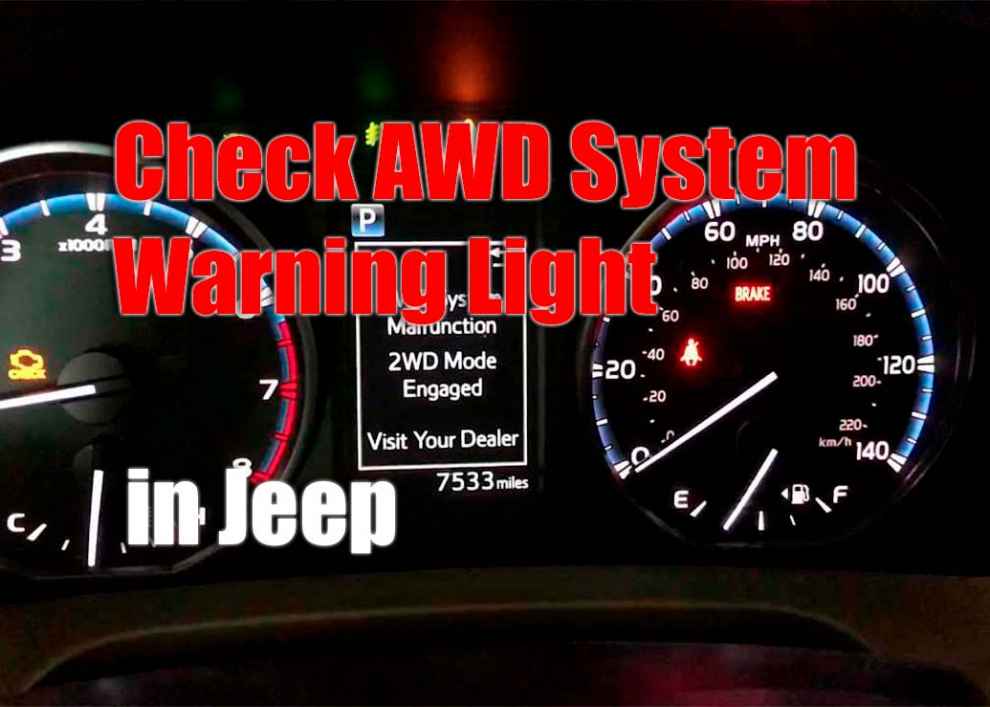All-wheel drive systems are designed to provide improved traction and handling while driving in bad weather or off-road. They are especially beneficial for vehicles that often travel on slippery roads or during winter weather. Unfortunately, AWD systems can sometimes display a warning light on the dashboard that can indicate a problem with the system itself, such as low fluid levels, faults in the differential, or worn parts. To ensure the longevity and reliability of your car’s AWD system, it is important to understand how to diagnose and address any warning lights that may be illuminated.
How to Diagnose an AWD System Warning

If you have checked and filled all fluid levels and inspected for visible signs of damage but still have a warning light on your dashboard, it is time to take a closer look at your vehicle’s AWD system. Many modern cars come equipped with onboard computers that can help diagnose any issues with the car systems. If your car has one of these diagnostic systems, take it to your local auto repair shop so they can access and read any code errors to identify what may be causing an issue with your AWD system.
What Can Cause an AWD System Warning?
The AWD system warning light in a Jeep is usually illuminated when one of the AWD system components has failed or is malfunctioning. Common causes of the light illuminating include low fluid levels, worn parts, faulty sensors, and other mechanical issues.
-
Low Fluids: The AWD system uses transmission fluid to lubricate its components and ensure proper operation. If this fluid level is low due to leaks or regular wear and tear, it can cause the AWD warning light to come on. To prevent it, regularly check the fluid levels and top off as needed. Read here about Best Coolant for Jeep Wrangler and Grand Cherokee.
-
Worn Parts: Over time, certain parts of the AWD system can wear out due to normal use or extreme conditions such as off-roading. It can cause the warning light to come on until these parts are replaced with new ones that are properly functioning. Performing routine maintenance tasks, like regularly inspecting for wear and damage, is essential to prevent malfunctions.
-
Faulty Sensors: The AWD system sensors are very sensitive and can easily be damaged if exposed to extreme temperatures or rough terrain while driving. If any of these sensors fail, they will send an error signal, which can cause the warning light in your Jeep to come on until they have been replaced with new functioning ones.
-
Other Mechanical Issues: There may also be other mechanical issues present within your Jeep’s AWD system that could cause it to malfunction and trigger a warning light on your dashboard. These issues could include loose bolts, electrical wiring problems, etc., which would need immediate attention from qualified mechanics to keep your car running smoothly without any further issues.
How to Repair AWD System Warning?
Once you have identified what may be causing an issue with your AWD system, it’s time for repairs! Depending on what was diagnosed as being wrong with your vehicle, this could require anything from replacing parts such as seals and gaskets to replacing worn-out axles and transfer cases if necessary. If you are unsure how best to approach repairs yourself, always consult a professional mechanic for their advice before attempting any repairs yourself – they will be able to provide more detailed information regarding what needs fixing and how best to do so safely!
Conclusion
Knowing how to diagnose and repair any warning lights on your car dashboard is essential for keeping your car running smoothly and safely. Taking the time to understand what can cause an issue with your AWD system and how best to address it will ensure that you and your car remain safe on the road. Be sure to always check fluid levels, inspect for visible signs of damage or wear, and take advantage of onboard diagnostics if available. If unsure, always consult a professional mechanic who will be able to provide more detailed advice regarding repairing any issues with your AWD system quickly and correctly.

Add Comment